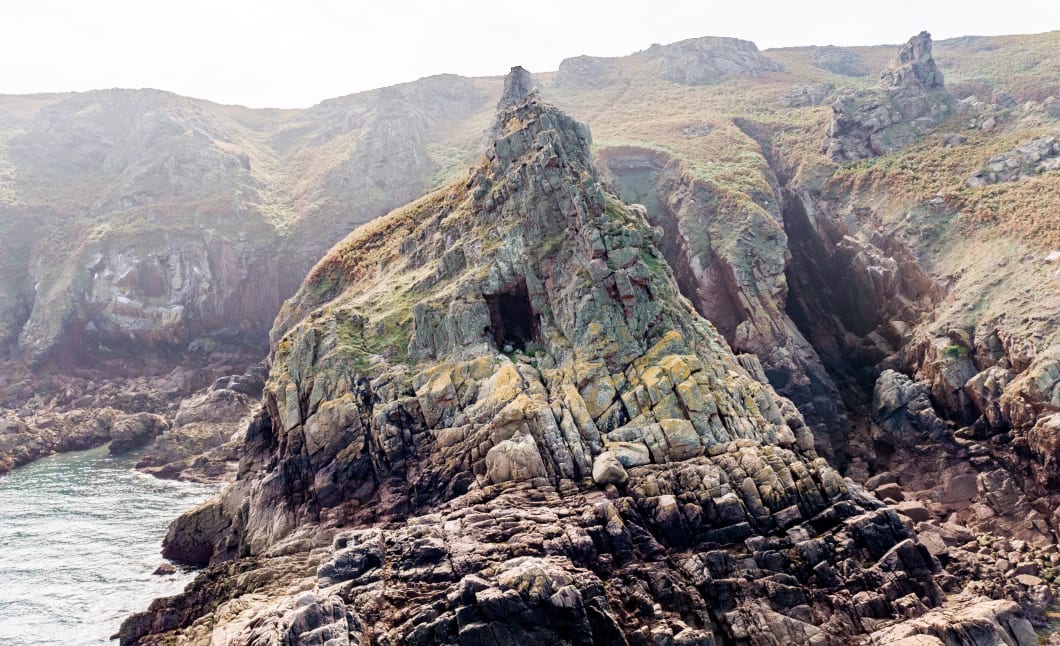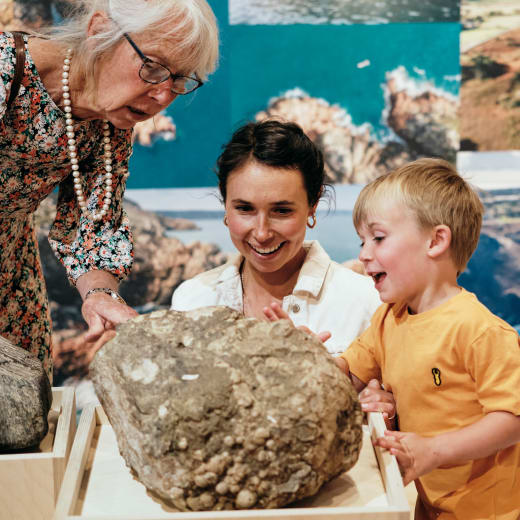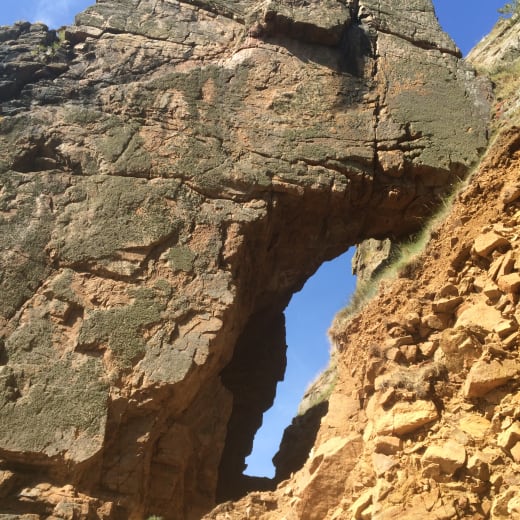
Volcanic activity is the origin of many of the rocks that you will find under your feet today. Millions of years ago, Jersey’s volcanic origins took place long before fish swam in the sea and dinosaurs roamed the Earth
Around 584 million years ago, the area that would become Jersey was underwater on the Cadomian plate boundary. Friction along this subduction zone generated violent volcanoes that produced a swathe of volcanic rocks including the rhyolites and andesites. Today these can be found in places such as Bouley Bay, Anne Port, parts of town and in St Saviour.
The discovery of a pillow structures in the St Saviour andesite suggests that the earliest volcanic eruptions took place underwater as these form when the hot lava suddenly cools in water. Later eruptions took place on land making this the first time that the rocks of Jersey were exposed to the earth’s surface. Examples of ‘tuff’, which appears at Westmount in St Helier and Bouley Bay in Trinity, tell us that some of these later eruptions were terrestrial. Tuff is a pyroclastic rock made of more than 75% volcanic ash that forms during volcanic eruptions when lava and superheated ash are ejected explosively. Places like Bouley Bay would have been exceptionally dangerous at this time as pyroclastic flows and volcanic ‘bombs; rained down from nearby volcanoes. These violent and destructive eruptions would have been similar to the Mount Vesuvius event that destroyed the city of Pompeii.
Volcanic rocks have been used in the Island’s built landscape. For example, the Bouley Bay Rhyolite can be seen in the largest capstone at La Pouquelaye de Faldouet.
At the time of these eruptions the land and seascape around Jersey would have been an island arc of volcanoes adjacent to a plate boundary, similar to modern Indonesia. Periodically there would have been a colossal eruption, similar to Krakatoa in the 19th century who physical and climatic effects may have had regional consequences.
These are the conditions that underpin Jersey’s volcanic origins. Our neighbouring Channel Island, Guernsey, does not have any volcanic rocks from this time suggesting that any erupting volcanoes were situated far away. Meanwhile, Jersey’s volcanoes managed to build up around two kilometres of lava and ash over a period of a million years. These ancient volcanoes have left us with some spectacular rock formations including a miniature Giant’s Causeway of hexagonal lava columns visible within the Anne Port rhyolite.
As tectonic forces pushed the continental plates together, the volcanoes eventually became part of a larger land mass. These processes still operate today and will in time mean that places such as the Indonesian islands will become part of the main Asian landmass.
The end of Jersey’s volcanic eruptions, around 583 million years ago, was signalled by a phase of mountain building known as the Cadomian Orogeny. Colliding tectonic plates caused the underground rocks to melt, forming a magma chamber, several kilometres beneath the surface. The magma slowly cooled forming plutonic igneous rocks like granite, gabbro and diorite. The texture and size of minerals in these rocks reflects how quickly the magma cooled as larger minerals generally form in rocks that cool slowly. This is how the Southwest and Southeast Granitic bodies of Jersey formed, deep inside a mountain range that, like today’s Andes, formed along a plate margin where granitic magmas bulged up into the earth’s crust. The Northwest granites around Plémont, Grosnez and L’Étacq were created by a similar process but are much younger than their Southwest and Southeast counterparts.
Jersey granite is a magnificently varied beautiful plutonic rock with varying colours, patterns and textures. These are the result of different mineral compositions, varying rates of cooling and the effect of intruding dykes, faulting, erosion and weathering. These variations have directed the way in which that people have historically used local granite, from early Neanderthals and later Neolithic farmers through to modern quarrying.
We sometimes take Jersey’s granites, rhyolites and andesites for granted, thinking of them as one big lump of undifferentiated rock. The truth is far more dramatic and violent and the evidence for this may found across the Island, underneath your feet.
This is Jersey’s version of the Giants’ Causeway where, around 530 million years ago, lava flowing from a volcano cooled quickly, forming a rock called rhyolite. As the rhyolite cooled it split into hundreds of distinctive hexagonal columns (bit like the pattern made by mud drying beside a pond). In Jersey the columns in ‘the causeway’ are lying at an angle of about 30 degrees whereas in the Giants’ Causeway they are vertical. Nonetheless, they are distinctive and may be seen on the beach or from the roadside at La Crête.
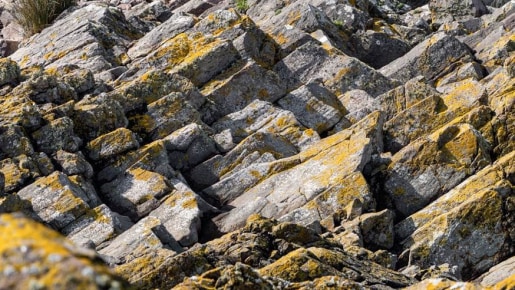
Rhyolite at Anne Port
The rock in the photo is named L’Étacquerel (the adjacent fort is named after it) and it is made of Bouley Bay Ignimbrite which was produced by explosive volcanic eruptions around 530 million years ago. These eruptions produced layers of superheated ash and debris that tumbled, in the form a pyroclastic flow, down the side of the volcano to accumulate in deep layers that later cooled into solid rock
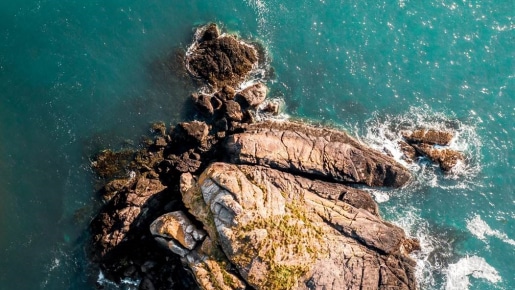
Tête des Hougues made of made of Bouley Bay Ignimbrite
This rock is made of diorite which, about 540 million years ago, was a large pool of liquid magma deep below the Earth’s surface. As the liquid diorite was cooling and turning into rock, it became mixed with a different sort of magma (granite) which created a complex network of lighter coloured veins visible in many rocks around Green Island.

Green Island rockface of diorite and granite







